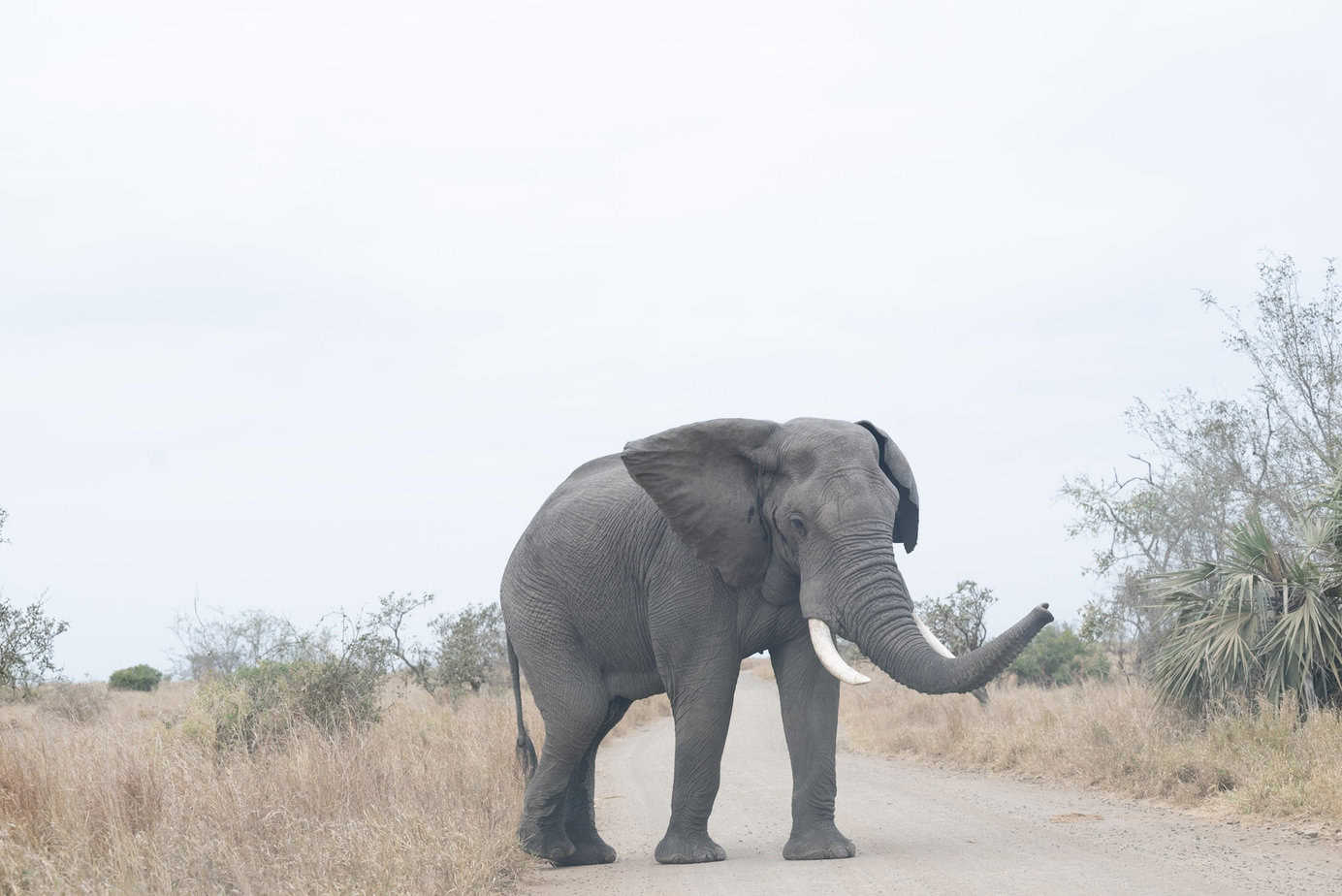Self-Driving Kruger National Park- Ultimate Guide
Self-driving Kruger National Park in South Africa is one of the best ways to make a safari more affordable. It requires more planning and thought but also costs thousands of dollars less than some of the private game reserves nearby. It’s worth the effort if you’re budget-conscious.
Both times I was planning my trip to Kruger, I was disappointed with the information I could find about the rest camps and how to book and plan. So, this is everything I learned to help you plan your self-driving safari through Kruger.
Some of the links on the page are affiliate links. If you choose to purchase from one of the links, I earn money at no extra cost to you. I’ll only recommend brands I’ve used and love (or an alternative I would book myself). As an Amazon Associate, I earn from qualifying purchases. I always pay for my own travel. I’ll be sure to let you know if that ever changes. If you choose to click through and purchase – thanks so much for the support!
Links for Things I Recommend
- Rent a car for your trip -I recommend a small SUV.
- Drive times in the park – Don’t trust your GPS.
- Rest camps in Kruger
- Tours and activities with Kruger Park Officials
- Tour options if you’ve decided you don’t want to self-plan this one.
Where is Kruger National Park & How Do You Get There?
Kruger National Park is northwest of Johannesburg in South Africa. It borders Mozambique.
The closest major airport to Kruger is the Kruger Mpumalanga International Airport. You’ll likely fly here, as it’s well connected to Johannesburg.
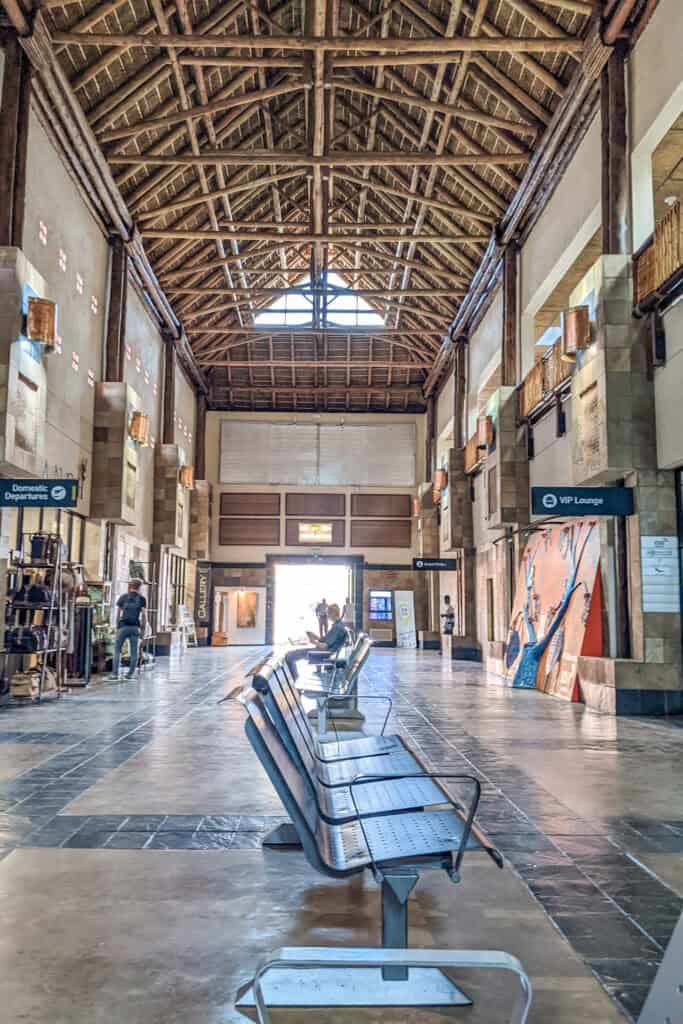
When you’re planning your trip, remember that the park is closed from dusk until dawn (more or less). If your flight arrives late or leaves early, plan ahead to make sure you can drive on the roads to arrive on time.
There is a rental car location at the airport. It’s an easy drive to the gates of the park.
There is also a small airport in the park at Skukuza that would be another option. You can also rent a car here. There are fewer flights into Skukuza but it’s a good option to work for if you don’t want to drive outside of the park.
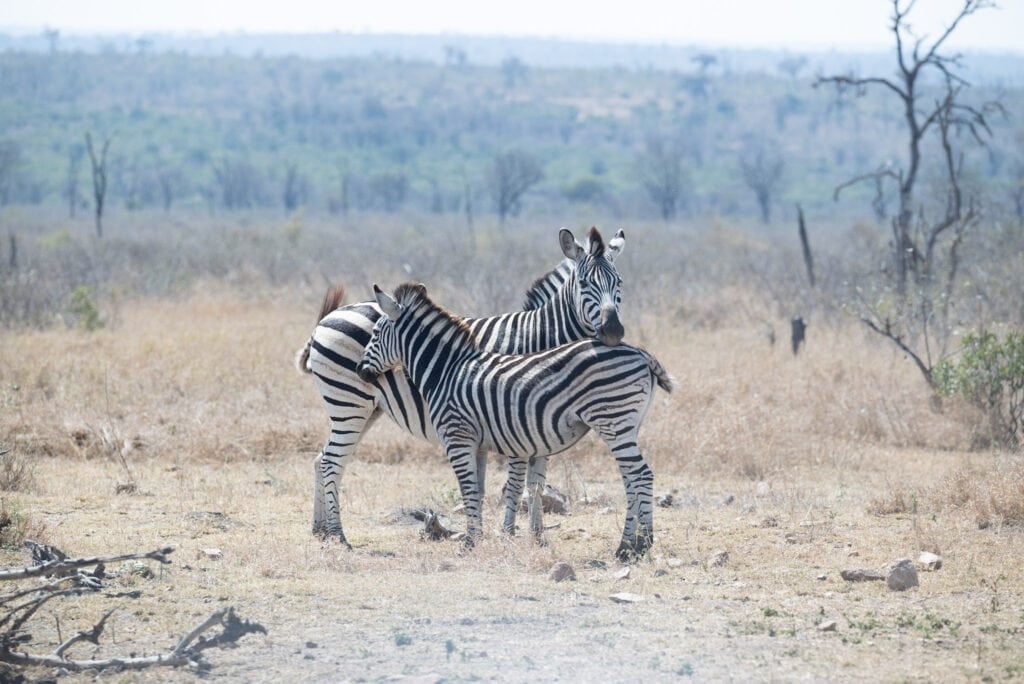
Renting a Car to Self-Drive Kruger National Park
To do a self-drive safari, you’ll need to rent a car. This is easy. But if you require an automatic transmission, reserve your car early.
I recommend renting a small SUV or another vehicle that sits high.
I rented a mid-size car. While that was fine, seeing over the tall grasses was sometimes hard. It made spotting wildlife harder than it would’ve been in a bigger vehicle.
The elephants and buffalo were no problem, but the grassy areas with the lions, leopards, and cheetahs were a bit more of a struggle in a small car.
A Note About GPS & Driving
Kruger is a really big park, and the speed limits are slow. Before you make your plan for the day, pay attention to whether a road is paved. Unpaved roads are some of the best roads for animal spotting. They are easy to drive but travel slower than paved roads.
Use drive times from the park maps and not your GPS. The GPS estimates are typically faster than the actual drive time.
Also, consider that you may stop to see animals or be stopped in slow traffic because of animal sightings. So, always build in a bit of buffer.

How Long Do You Need in Kruger National Park
If you plan to self-drive, plan to spend 5-7 days at a minimum in the park. The longer you spend, the more time you’ll have to explore various areas.
With less than 5 days, you can still see the park, but you’ll want to explore a smaller area so you don’t spend too much time moving around.
I have a full 7-day itinerary that you can use if you’d like!
Pros and Cons of Self-Driving Kruger
Like everything, there are pros and cons.
Pros for Self-Driving Kruger
- It’s much more affordable than the private game drive option. For example, the cheaper lodges in Sabi Sands will be about $3800 per person for a 7-night stay. You can do 7 nights in Kruger for $300 per person (less if you want to camp). The stays are all-inclusive, but you’d have to spend a lot on a rental car and food to make the difference. If you want a luxury stay, look here instead.
- Spotting an animal on your own is incredible. There are times when it may just be your car and an animal. Those are special.
- You can determine where you want to go and what you want to look for. If you get tired from the early mornings, you can start later instead of being held to a group tour schedule.
Cons for Self-Driving Kruger
- There are a lot of decisions to make. What camps are you going to stay at? What drives are you going to take? When am I driving, eating, or sleeping? You’re in charge of your destiny, but it does mean decision fatigue can be real.
- Spotting animals can be difficult, especially if you’re alone. A taller vehicle does help, and the guided activities at the camps can also help.
On other safaris, I learned to look for movement. The animals may be camouflaged, but if you notice something moving, use binoculars and take a second look.
If your budget is your main concern and you’re willing to put in the work, the self-drive option is a fun experience.
If you don’t like the idea of self-planning your trip, look into one of the private reserves.

Potential Daily Schedule
Your daily schedule will depend on whether you stay in the same camp or move locations. There are options below for both. Not much changes, but I still find it helpful to have it written out.
Staying in the Same Camp
Leave the camp when the gates open– the camp gates, not the park gates. If the gates open at 6:00 a.m., a line of cars will likely be ready to exit by 5:45 a.m.
Plan your drive before you leave. The animal sightings board can help you decide, or you can look at the popular drive routes in the guidebooks available at the visitor centers. You don’t need to decide before you get there. The boards are really helpful in deciding where you want to explore.
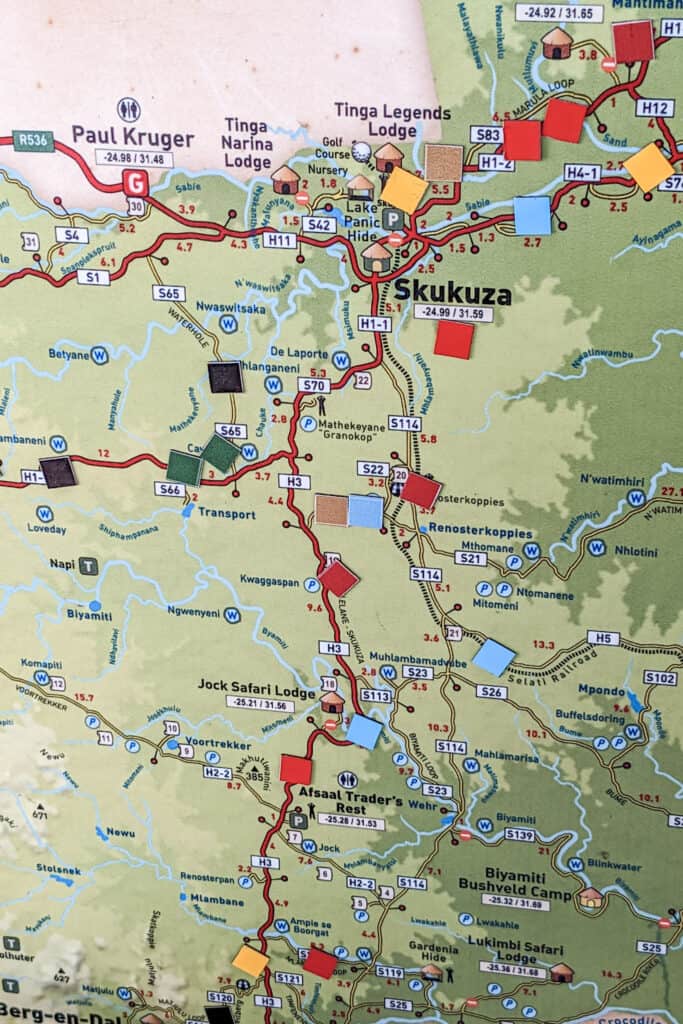
After the morning drive, come back for a late lunch when the day starts to get hot. The animals aren’t as active, so this is a good time to take a nap or hang out in the rest camp. Some have pools.
As the day starts to cool off, eat lunch and head back out for the afternoon game drive. Again, have a plan.
Be sure to be back before the gates close! This is usually right around dusk. They’ll let you in late, but they’ll charge you. Know when the gates close and stay aware of where you are in relation to your camp.
Eat dinner. Yes, it will likely be late. Then, head to bed to repeat the next day.
If you’re Changing Camps
You can still leave early and come back to come if you’d like. But, you need to be back by the check out time.
Don’t plan a super long drive. Remember that the roads are slow. The longest I went was about 4 hours, which was more than enough.
Still, plan a game drive in the morning. Even if you leave a bit later than the gate-opening time, you can drive around the area near your camp.
Then, when the day starts warming up head on toward the next camp. You can eat lunch at another camp on the way or eat a trail lunch of some kind when you’re driving.
Try to be at your next camp to check in before you go out for your evening game drive. It’s nice to find your lodging and know where you’re going since it will be dark when you come back after the game drive.
Return before the gates close and eat dinner.
How to Book Your Lodging for Self-Driving Kruger
Book directly if you plan to stay at a private game reserve. These reserves usually have their own space that they maintain, but they may drive into Kruger proper for a bit. If that’s your plan, it wouldn’t be a self-drive safari, but it would still be great.
To book your lodging in Kruger, visit the National Parks website. It can be a little clunky and move slowly, but it’s not hard to navigate as long as you know what you’re looking for. It’s not a good search engine, though.
Restcamp Recommendations
There are plenty of different camps to choose from in Kruger, so it can be hard to determine where to stay. Your drive times each day will be a big factor in your plan, but so can the animals you want to spot and the type of lodging you’d like.
Berg-en-Dal
Berg-en-Dal is one of the southern rest camps.
(Scroll to the bottom of the links to see a camp map)
This is the best area in the park for spotting rhinos. Rhinos are really hard to find, and the sightings aren’t marked on the maps because of poachers.
You may have to spend some time driving around to try to spot one. But you could also see a number of other animals here, so it’s worth exploring the area.
I didn’t stay here and had to drive a long way to try to spot a rhino. It worked, but I wish I’d known about Berg-en-dal before I booked my accommodations.
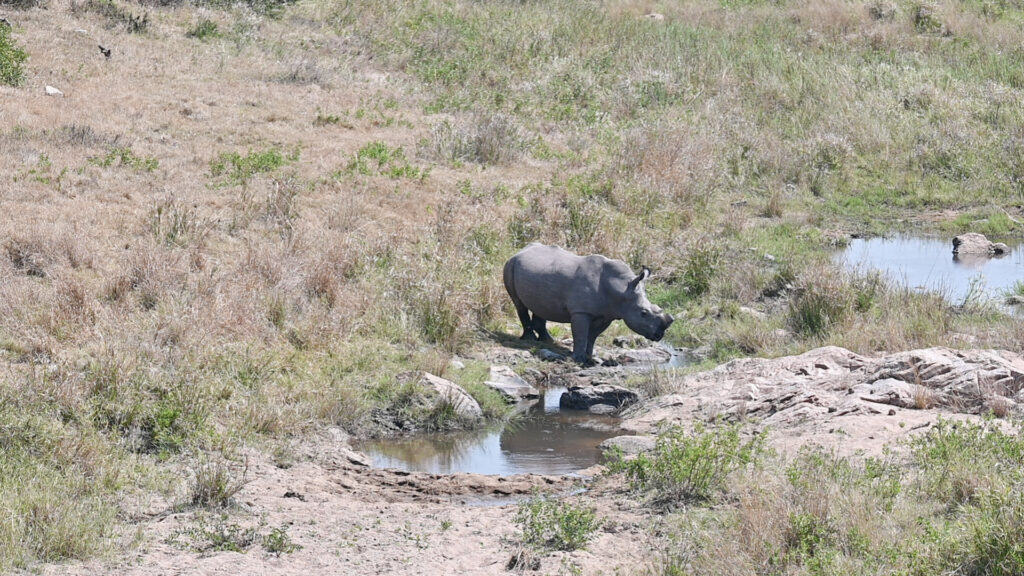
Skukuza
Skukuza is the biggest of the rest camps and serves as the park headquarters. It’s a great place to stay and explore the entire southern section of the park. If you want to stay centrally, this is a good place for a few nights. Plus, there is lots to do in the camp and several ranger-led activities as well.
Lower Sabie
Lower Sabie is situated along the river. It’s a great spot for elephant and birdwatching. The Lower Sabie tents are more like canvas-sided cabins. Don’t be intimidated by them.
Book early enough to get a prime spot along the river.
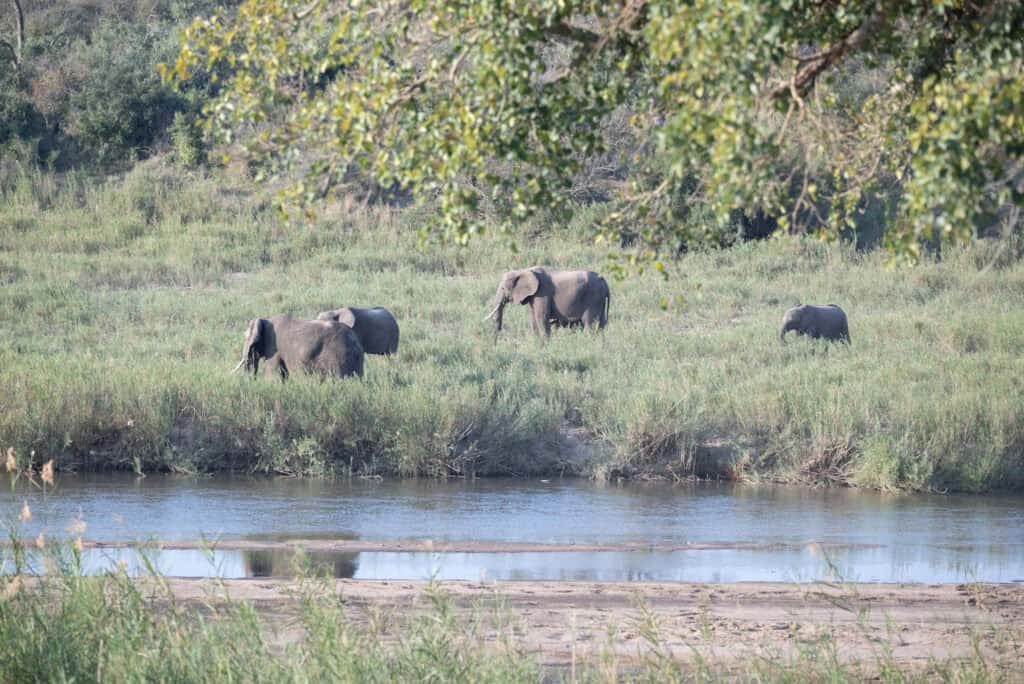
I was in Tent number 128 and could watch the elephants along the river from the porch. The tent was my favorite accommodation in the park.

I had to book through the SAN Parks site and then email the office to request a tent.
Satara
Satara is the top rest camp in the park for you to consider. It is most well known for having the best viewing of the big cats. It’s common to see lions, leopards, and cheetahs here.
Give yourself a couple of nights so you can get multiple drives in to try to catch a site of some of the big cats.
This area of the park has a lot of tall grass. The taller vehicle would’ve been very nice here.

Olifants
Olifants is a more northern rest camp and probably the farthest north you’ll go in a 5 to 7-day trip unless you’re focusing on the park’s north side.
This rest camp sits on top of a big hill and is known for elephants. You’ll have the opportunity to see elephants in other areas of the park, but the view from the hill is pretty great. Try to get a river-view bungalow to look for animals with binoculars from your porch.

As pretty as the view from Olifants was, it was a long drive up and took a lot of time. With a short stay, I’m not sure it was worth it.
The other big draw at Olifants is that you can book a morning river walk at this camp, which you can’t do elsewhere. The walk did take you near some hippos, but it wasn’t much different from the walks in the other camps.
Pretoriuskop
Pretoriuskop is the oldest rest camp in the park. It’s very convenient to drive into or out of the park. Pretoriuskop has a much different landscape than other areas of the park. It has thick vegetation and a rocky landscape.
It’s common to see some herd animals as you go down the hill. But I was able to see two leopards at night on a game drive. So, there is a chance to see a lot here even though it’s not known as much as some of the other camps.
What to Expect at the Rest Camps
Each of the rest camps has a market and typically a restaurant. The size of each depends on the size of the camp. But, you can find basics at all of them.
Your lodging depends on what you book. Use the SANParks site to explore the options at each camp. Typically, there are two-person bungalows with kitchenettes at each camp. That’s a good place to start.
Search the site before you’re ready to book so you know what you’re looking for when it comes time to book.

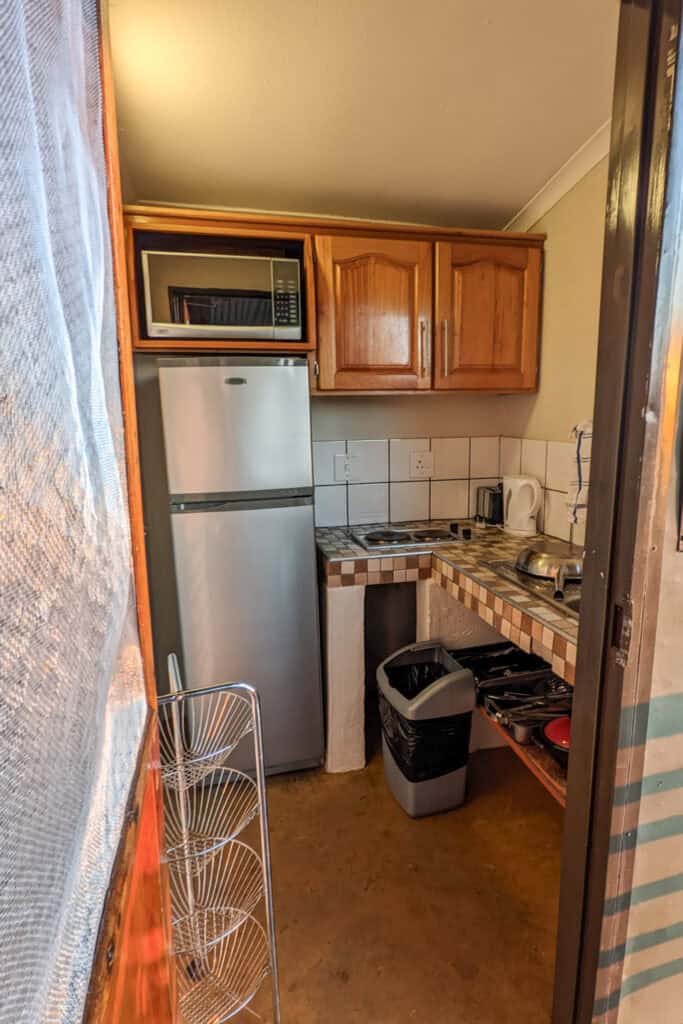
If you want one of the popular rest camps or a prime location, you need to get your reservation as soon as they open for your visit. The best spots book out early.
Booking Activities in The Park
The camps at the park each offer activities you can book. Some include bush walks, game drives, and even mountain biking!
First, you don’t need to book activities to see animals! I had a real fear I wouldn’t see anything. It feels silly now, but it was a real concern before the trip—even after a South African friend told me I didn’t need to worry.
That said, the bush walk is an interesting experience. It’s the only time I’ve ever been able to walk around a safari area on foot, and you definitely get a different perspective.
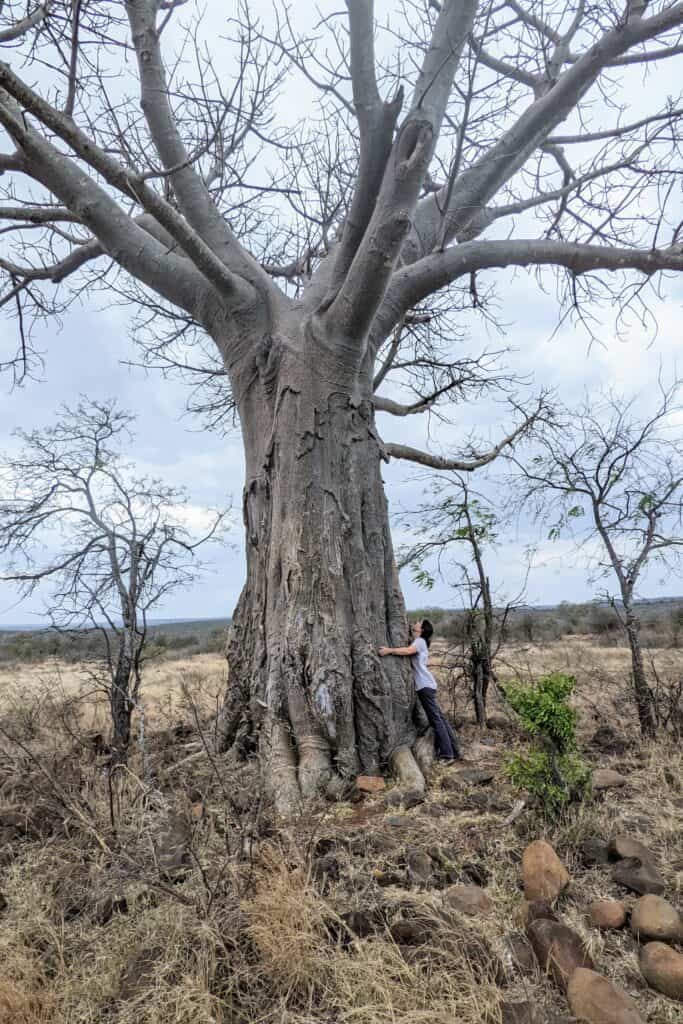
The game drives can be nice because you have the opportunity to go when the park roads are closed. Different animals are active at night and you get a chance to see them being more active.
Most activities are quite early or late compared to the schedule you’ll typically be keeping.
Consider planning at least one bush walk and one night drive. Pay attention to the times so you don’t have a late night followed by an early morning.
To book, you can use the SANParks website to decide what activities you’re interested in. Please pay attention to the requirements they may have. For example, you can only do a night drive from a camp you’re sleeping at.
Book your lodging first, and then you can go back in and add the activities. You won’t be able to add many activities without lodging booked.
The tours will be booked up, but not as quickly as the lodging. Still, I found it easier to do it all at once. The process isn’t hard, but the website isn’t always straightforward.
Eating in Kruger National Park
You can easily find options at the camps that have options for kitchens. Some have private kitchens, and others have shared options. It depends on what you book and what camps you’re looking at.
I was able to get a private kitchen at each of the camps I stayed at.
Each camp has a market. The variety depends on the size of the camp. You’ll find some produce, eggs, and meat. But, larger rest camps have more than the smaller ones.
Note that much of the meat is frozen. So, unless you’re staying in the same place for a few days, purchasing something and then immediately cooking it on your stovetop or charcoal grill won’t be easy.
I wasn’t expecting this so I ate at the restaurants in each camp more than I expected to.
If I were doing it again, I’d stop by a grocery store before heading into the park. I’d pick up a cooler and some other staples, but bringing a cooler bag from home would probably work.
My gluten-free diet impacted my preference, but cooking in your accommodation is a good way to keep the trip affordable, too.
What to Bring for Self-Driving Kruger
First, remember that you can’t get out of your car in the park except at camps or designated areas. So, you don’t really need to worry about specific safari clothes. Just be comfortable.
You will need neutral or dark clothing if you’re going on a bush walk with the park rangers. Don’t overthink it. Dark sweatpants and a sweatshirt are fine.
Bring any medications you need from home. Don’t plan to find a well-stocked pharmacy in the park.
Binoculars are a must! These from Vortex have been on every safari with me! Birds and animals can be far away, but binoculars can give you a much better view, even if they’re relatively close.
Get the guidebook from a camp visitor center. With any luck, there will be one with illustrations of different animals to help you ID and keep track of what you’ve seen. It’s more fun trying to identify the birds than I expected.

If you want good photos, you’ll need a telephoto lens. You may get lucky and get some photos of the herd animals with your phone or small zoom camera. But set your expectations if you aren’t bringing at least a 200 mm lens. This Nikon camera is my pick. This 70-200 was the lens I used.
It’s an expensive camera setup, but the pictures are incredible. If you want to dive into photography for amateurs, I have it for you (coming soon!)
A headlamp is helpful for walking around the camp when it’s dark. You can also use your phone flashlight. My headlamp is similar to this version from Black Diamond.
Be ready to be patient. You can get caught in a herd of buffalo or on the road with a massive bull elephant. Don’t be in a hurry to get anywhere. Give yourself plenty of time so you enjoy the experience.
Enjoy Self-Driving Around Kruger National Park
Self-driving through Kruger is a fun experience. You get to meet people and feel more in control of your experience. Plus, it’s a much more affordable way to safari!
Planning your trip around Kruger is part of the fun. I really wish we’d had a taller vehicle, but other than that, it was a great trip!
